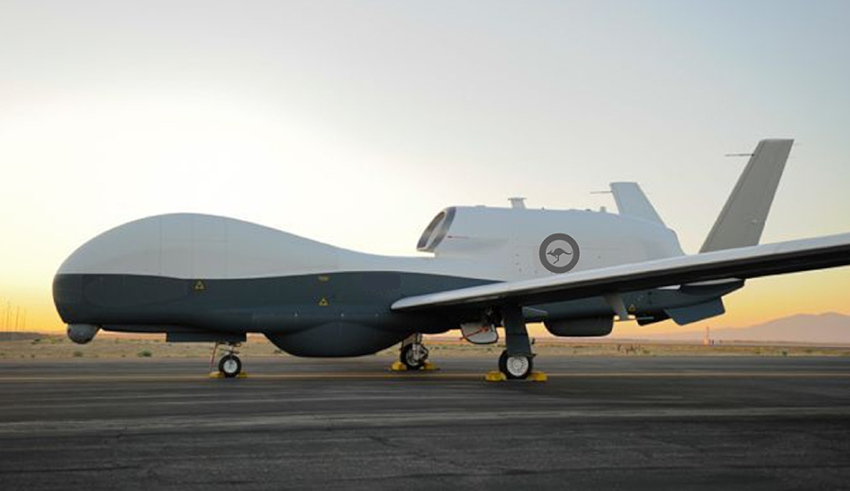The US Navy is sending two high-altitude MQ-4C Triton drones to Guam on their first overseas deployment, placing the sophisticated surveillance platform deep within the Indo-Pacific, providing an opportunity for the Royal Australian Air Force to learn from the experience.
To continue reading the rest of this article, please log in.
Create free account to get unlimited news articles and more!
Getting unmanned systems out in front of manned aircraft and ships in the Pacific has emerged as one of the US Navy’s highest priorities, as China continues to expand and reinforce its integrated web of sophisticated anti-access/area-denial capabilities in the South China Sea.
These developments have been of growing concern for both Australian and US military planners as the increasingly capable systems like the DF-21 and DF-26 continue to evolve, posing increased threat to major surface units.
Deployed alongside a group of sailors from the US Navy’s Unmanned Patrol Squadron 19, (VUP 19) the first unit to fly the Triton, the two drones are heading to Guam for an Early Operational Capability deployment to assess how they will operate alongside US and coalition aircraft.
Doug Shaffer, vice president and program manager of Triton program, Northrop Grumman, explained the importance of the deployment, particularly for Australia, saying, “VUP-19’s deployment is a major milestone for the Triton program as we continue to develop and refine the Triton system to meet the US Navy and Australia’s joint requirements for the multi-intelligence configuration. This deployment will enable both the US Navy and the Royal Australian Air Force to learn the requirements for sustaining deployed operations of the Triton system, and Northrop Grumman will be in support every step of the way.”
Remotely flying out of RAAF Edinburgh, South Australia, the Tritons are capable of monitoring 40,000 square kilometres a day and seamlessly flying a round trip for sustained surveillance and in support of allied Freedom of Navigation Operations in the South China Sea from the Northern Territory – increasing Australia’s interoperability with key allies, particularly the US.
Designed to operate in conjunction with Australia’s planned fleet of 12 manned P-8A Poseidon maritime patrol and anti-submarine aircraft, the Tritons provide a quantum leap in the nation’s surveillance and reconnaissance capabilities, while the facilities and crew required to operate, train and maintain will be part of the initial $1.4 billion investment, which includes $364 million on new facilities at RAAF Bases Edinburgh and Tindal (in NT).
“The first of the Triton aircraft is expected to be introduced into service in mid-2023, with all six aircraft to be delivered and in operation by late 2025, based at RAAF Edinburgh, South Australia,” then prime minister Malcolm Turnbull said at the announcement of the $1.4 billion acquisition.
This major announcement follows on from other recent announcements by the Australian government regarding the nation’s continuing commitment to contributing to regional peace and security, such as former defence minister Marise Payne’s $22 million announcement of Australian investment at Royal Malaysian Air Force Base Butterworth, which has been a pivotal base for Australian forces rotating through the region for the past 60 years.
It is clear from this and the upcoming announcements around SEA 5000 and LAND 400 Phase 3 that the government is committed to enhancing Australia’s capacity as a regional actor, with a highly competitive, sustainable defence industry base.

 Login
Login







